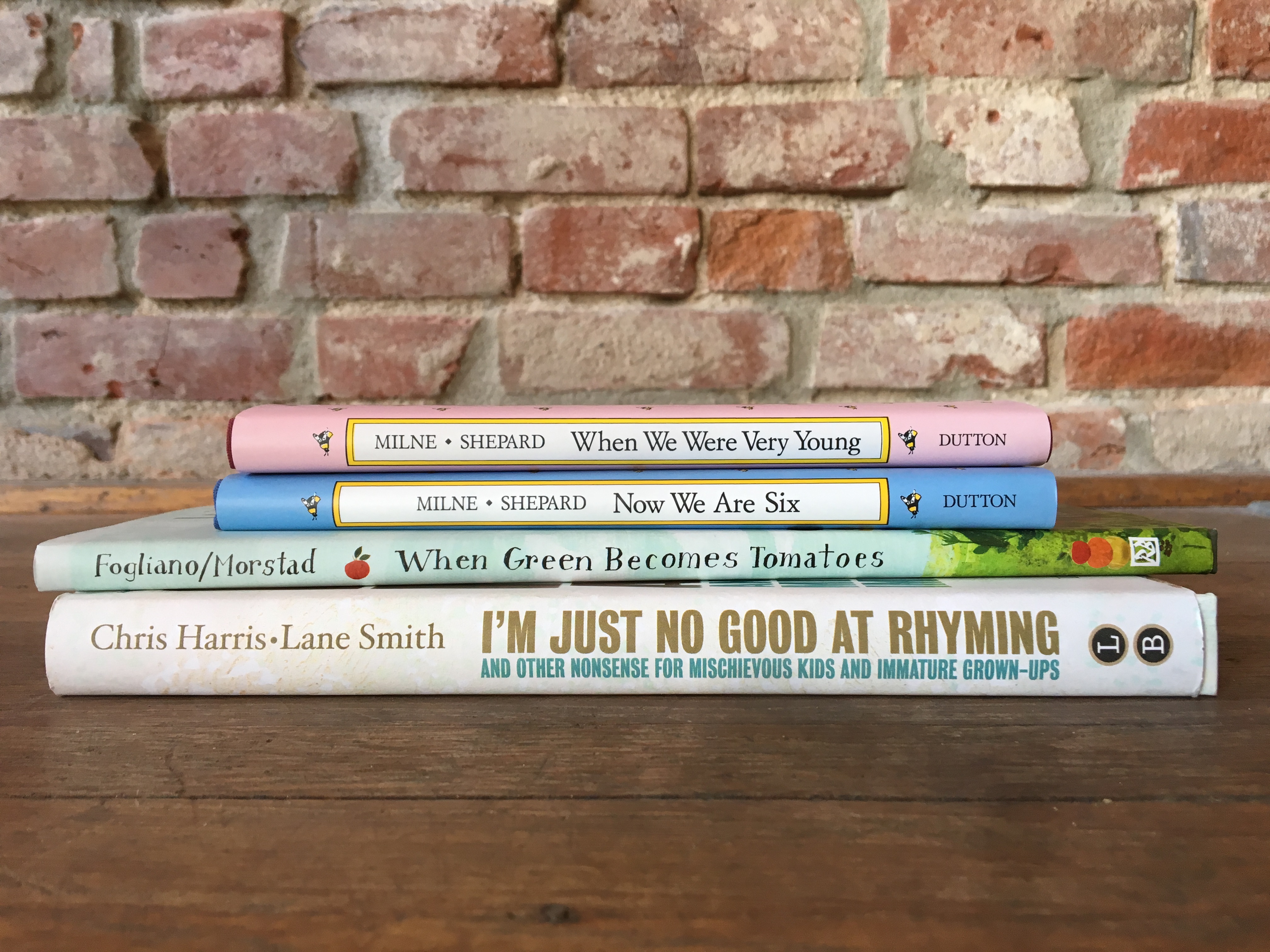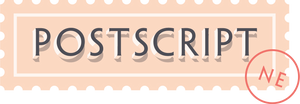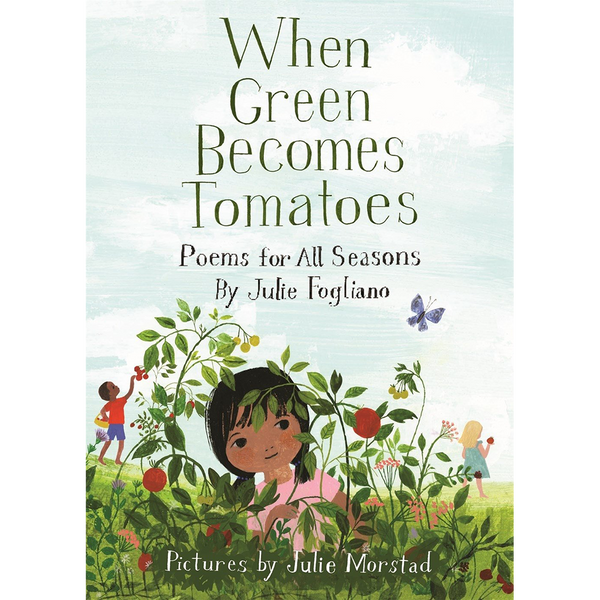Poetry for the (Little) People
18th Apr 2019
It’s not that I don’t appreciate Dr. Seuss and Shel Silverstein as much as the next gal. In fact, On Beyond Zebra and If I Ran the Circus are two of my most beloved books from childhood, and any time I’m faced with a job I don’t want to do, I mentally recruit Mr. Sneelock to handle it. But often a kid’s introduction to poetry ends with Where the Sidewalk Endswhen there is so much other great poetry out there to experience. So, if you haven’t checked any of these titles out, use the excuse of Poetry Month to peruse these as a family. You will be so glad you did!

• I’m Just No Good at Rhyming and Other Nonsense for Mischievous Kids and Immature Grown-Ups by Chris Harris and Lane Smith: This collection came out fairly recently, but it is an instant classic that I will keep in my home library forever. It is indeed full of nonsense (like the poem entitled, “If you ever have to memorize a poem of twenty lines or longer and deliver it to your class, then this is a pretty good choice,” which is comprised of one word – avocado – spoken at a variety of volumes and inflections), but the humor in this collection is often just a diversion from the fact that it is educational. For instance, in the title poem, “I’m just no good at rhyming,” the speaker confesses, “I’m just no good at rhyming. / It makes me feel so bad. / I’m just no good at rhyming, / and that’s why I’m so blue.” Stanza by stanza, a word that should have rhymed with an earlier line is replaced by a non-rhyming synonym, and the results not only make readers giggle, but the kids can’t help but supply the “correct” words themselves. This book is also filled with several examples of concrete, or visual, poetry—where you have to see it physically on the page to read it—which is a fun and novel thing for kids to encounter, and furthermore, it creates a lively and delightful interplay between text and image, author and illustrator, that often erupts into petty arguments and makes plain the fact that the author is not the only one with a hand in shaping interpretation. In this way, it is meta-textual—aware, in other words, of the book as an object and the ways in which books are constructed, and this, too, is a sophisticated idea to introduce to young readers. But the whole book is just so much fun that nothing about it feels like work, in the best way.
• When Green Becomes Tomatoes by Julie Fogliano and Julie Morstad. I’ve mentioned this book more than a few times on Instagram because it, too, won me over the first time I saw it and immediately became one of my favorite picture books to recommend and give. It is a book of mostly free-verse poems, organized by season, and exhibits a young speaker’s observations of and reactions to the world around her as it shifts and changes through a calendar year. Those observations are delightful and charming and surprising and admirable. The opening poem, “March 20,” reads as follows:
From a snow-covered tree
One bird singing
Each tweet poking
A tiny hole
Through the edge of winter
And landing carefully
Balancing gently
On the tip of spring
The image of a tweet “poking / a tiny hole / through the edge of winter” is at once completely believable as a child’s way of perceiving birdsong on the cusp of seasons, and yet also a fresh and surprising take on that transitional moment in time. And I completely adore “March 13” in the final section of the book, because it so accurately captured my feelings about this winter: “Politely / but tired of mittens / I asked the winter to please tell the snow / thank you very much, but no”. Every poem in the book is this good, truly.
• When We Were Very Young and Now We are Six by A. A. Milne: These books have obviously been around a very long time (published in 1924 and 1927, respectively), but I list them here because despite feeling like I know what’s in them, every time I return to these collections, I find myself utterly and completely entranced by the imagination, hilarity, and philosophical depth of these poems. In When we were very young, “Halfway down” is a poem that contemplates the location of the middle stair, which is neither up nor down nor in the nursery nor in the town. This sets the speaker’s mind a-spinning: where is he at all? “Spring morning” is a beautiful verse that celebrates the freedom of going wherever one goes: “If you were a bird, and lived on high, / You’d lean on the wind when the wind came by, / You’d say to the wind when it took you away: / ‘That’s where I wanted to go today!’” There is also much wrestling with parent-child relationships and children’s fierce desire for independence, and Milne nails the child’s perspective so adeptly. Now we are six is full of poems that simply capture the stuff of childhood, such as adventures with imaginary friends and escaped beetles and two raindrops pitted against each other in a race inching down the window pane. But there’s also surreptitious social commentary, such as when little Jane wonders why everyone keeps saying to her, “’Have you been a good girl?’” There is simply so much there. So much silly. So much sweet. So much serious. These are books you can return to over and over to spur good conversations or simply to just have some fun.
These are a few of my old and new favorites that do a fabulous job of combining humor and meaning and play and philosophical quandary into a reading experience that engages little brains deeply and effectively. I try to have these titles in stock at the shop always!
What about you? What are your favorite poems or poetry collections for kids? I am always looking for more poetry to share with my kids and bring into the shop. Please share your recommendations below!

